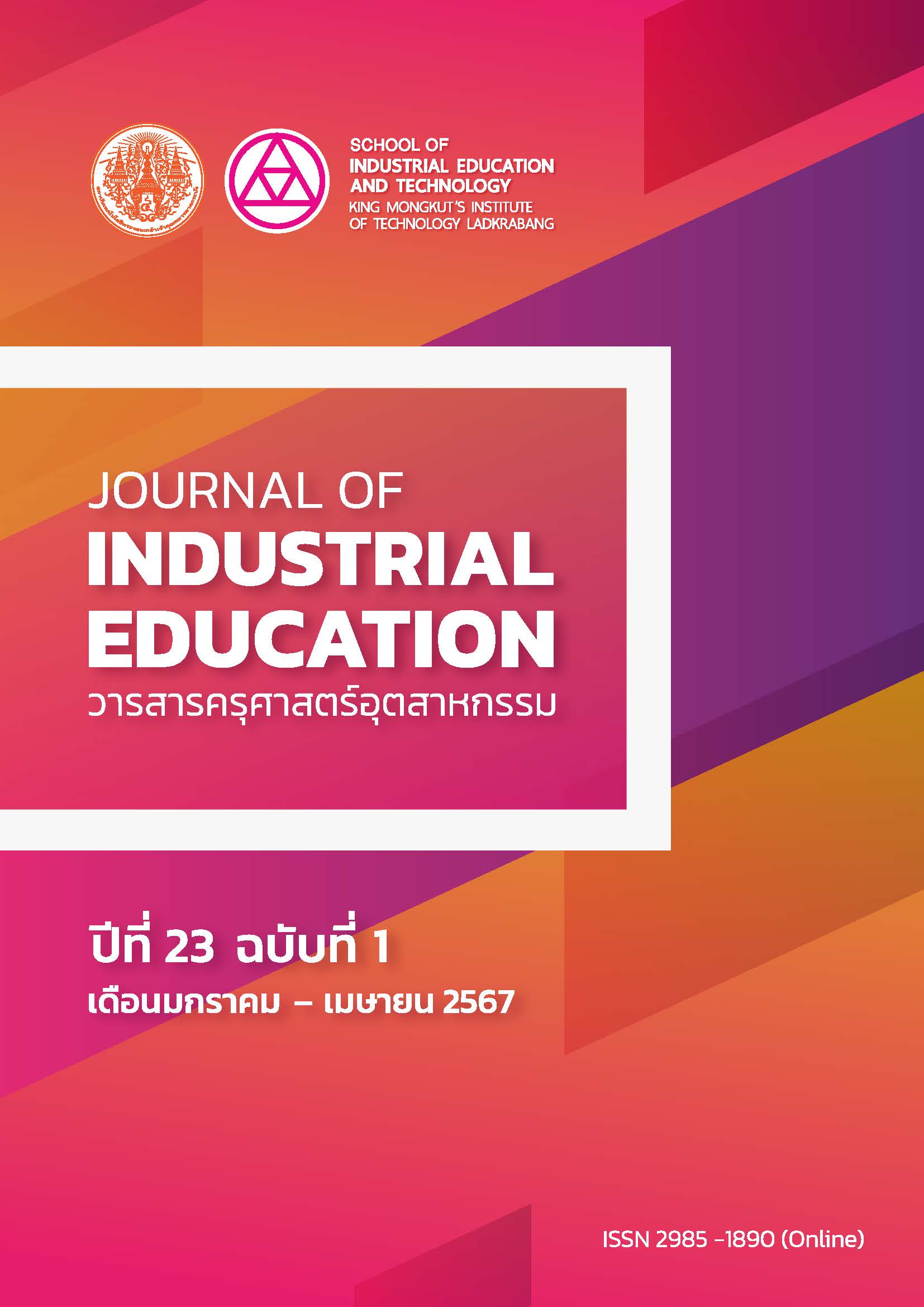STUDY OF PHYSICAL PROPERTIES MECHANICAL PROPERTIES AND THE DEVELOPMENT OF PARTICLEBOARD FROM DURIAN PEEL USING A COMPRESSION MOLDING PROCESS
DOI:
https://doi.org/10.55003/JIE.23108Keywords:
Particleboard, Durian peel, Mechanical strength, Flexural strengthAbstract
This research is the process study of producing particleboard from durian peel using the compression molding process. These studies are the physical and mechanical properties of particleboard from durian peel. The results found that the flexural test and the tensile test of furniture material sheets from durian peels at a ratio of durian pulp to glue water were 1:0.2, 1:0.4, 1:0.6, 1:0.8, 1:1, and 1:1.5, respectively. A specimen with dimensions of width 50 x length 200 x thickness 10 millimeters was tested with a machine. The universal testing machine of six samples in each ratio. It shows that the mechanical strength values increased when the ratio of water mixed with glue increased. The durian pulp has a better adhesion. This results are in a higher density as the ratio increases and at the ratio of 1:1.5, it has the highest strength and an average flexural strength of 5.74 MPa but it has not yet passed the criteria set by TISI 876-2004 with a flexural strength of not less than 14 MPa for plywood sheets with a thickness exceeding 6.0-13.0 millimeters. It has an average tensile strength value perpendicular to the surface of 0.49 MPa, which passes the criteria set by TISI standard, with the tensile strength value perpendicular to the surface not less MPa. than 0.40 for plywood with a thickness of more than 6.0-13.0 millimeters. For the testing of the burning rate of particleboard made from durian peels, it was found that the burning rate decreased when the ratio of water mixed with glue increased due to the increasing density of the workpiece at a ratio of 1:1.5 and it can stop the combustion by itself.
References
Office of Agricultural Economics. (2020). Durian. http://www.oae.go.th/view/1/TH-TH (in Thai)
Phonieum, T. (2016). Production of particle board from cattail and application for craft [Master’s thesis]. Rajamangala University of Technology Thanyaburi. (in Thai)
Samakkitam, H. (2015). The development of acoustic board from durian peel fibers [Master’s thesis]. Chulalongkorn University. (in Thai)
Sukeetham, S., Jarusombuti, S., & Veenin, T. (2019). Particleboard products from bamboo wastes of chopstick factorty. Thai Journal of Forestry, 38(2), 192-201. (in Thai)
Tengrang, S. (2014, October 9). Plastic from durian peel, Thairath. https://www.thairath.co.th/content/455352. (in Thai)
Thai Industrial Standards Institute. (2004). Flatpressed Particleboards (TIS. 876-2004). TISI. (in Thai)
Trade Policy and Strategy Office. (2020). Durian, the king of Thai fruits. http://www.tpso.go.th/home (in Thai)
Weeranukul, P., Ruengrangskul, J., Pradmali, S., & Khamput, P. (2011). The application of coconut meal, corncobs and durian peel as wood-substituted biocomposites in medium density fibreboard [Research Report]. Faculty of Industry Education, Rajamangala University of Technology Phra Nakhon. (in Thai)
Yenjai, P., Jarusombuti., S., & Veenin, T. (2016). Particleboard manufacturing from waste of cajuput (Melaleuca cajuputi Powell). VRU Research and Development Journal Science and Technology, 11(2), 131-140. (in Thai)
Downloads
Published
How to Cite
Issue
Section
License
Copyright (c) 2024 Journal of Industrial Education

This work is licensed under a Creative Commons Attribution-NonCommercial-NoDerivatives 4.0 International License.
"The opinions and contents including the words in papers are responsibility by the authors."
"ข้อคิดเห็น เนื้อหา รวมทั้งการใช้ภาษาในบทความถือเป็นความรับผิดชอบของผู้เขียน"



